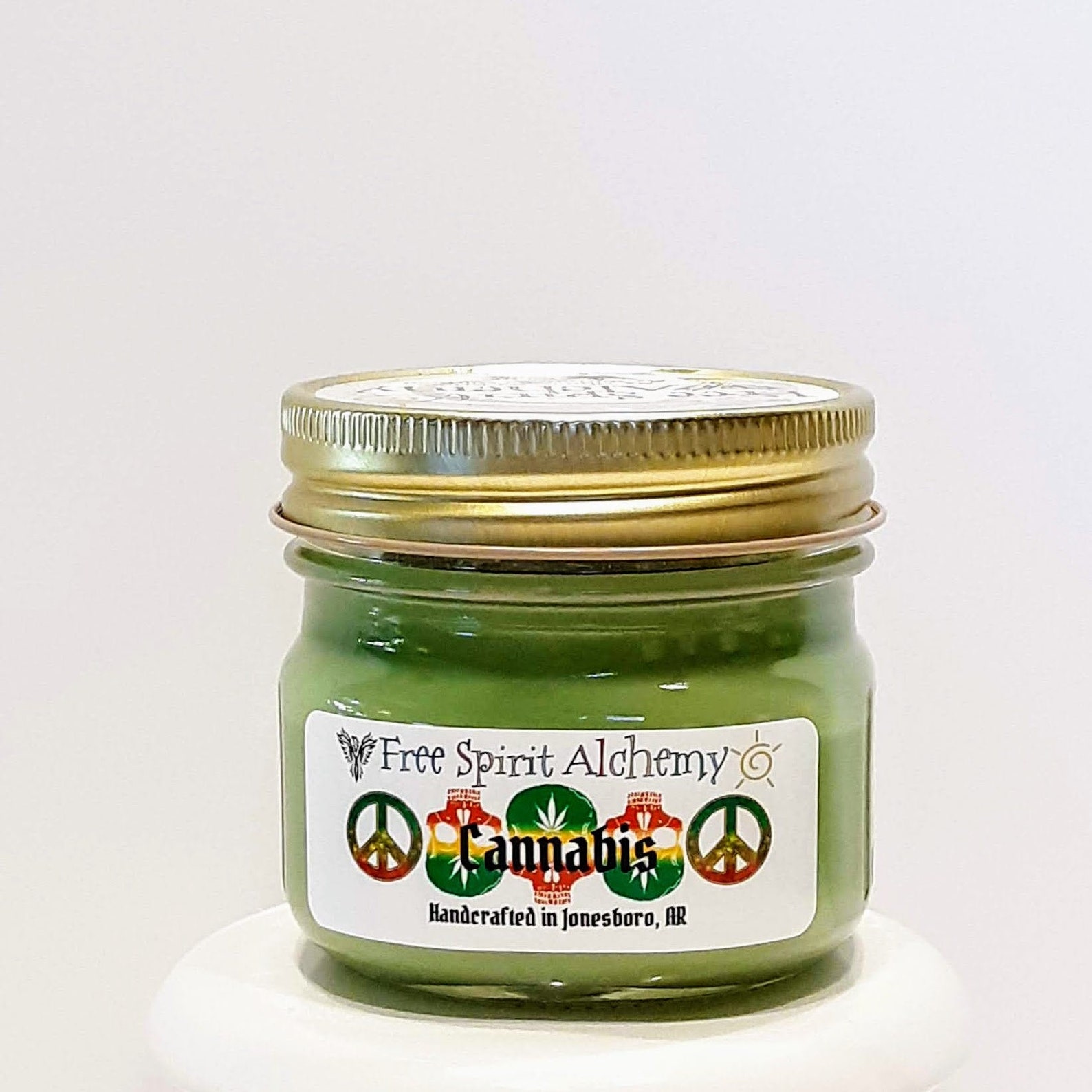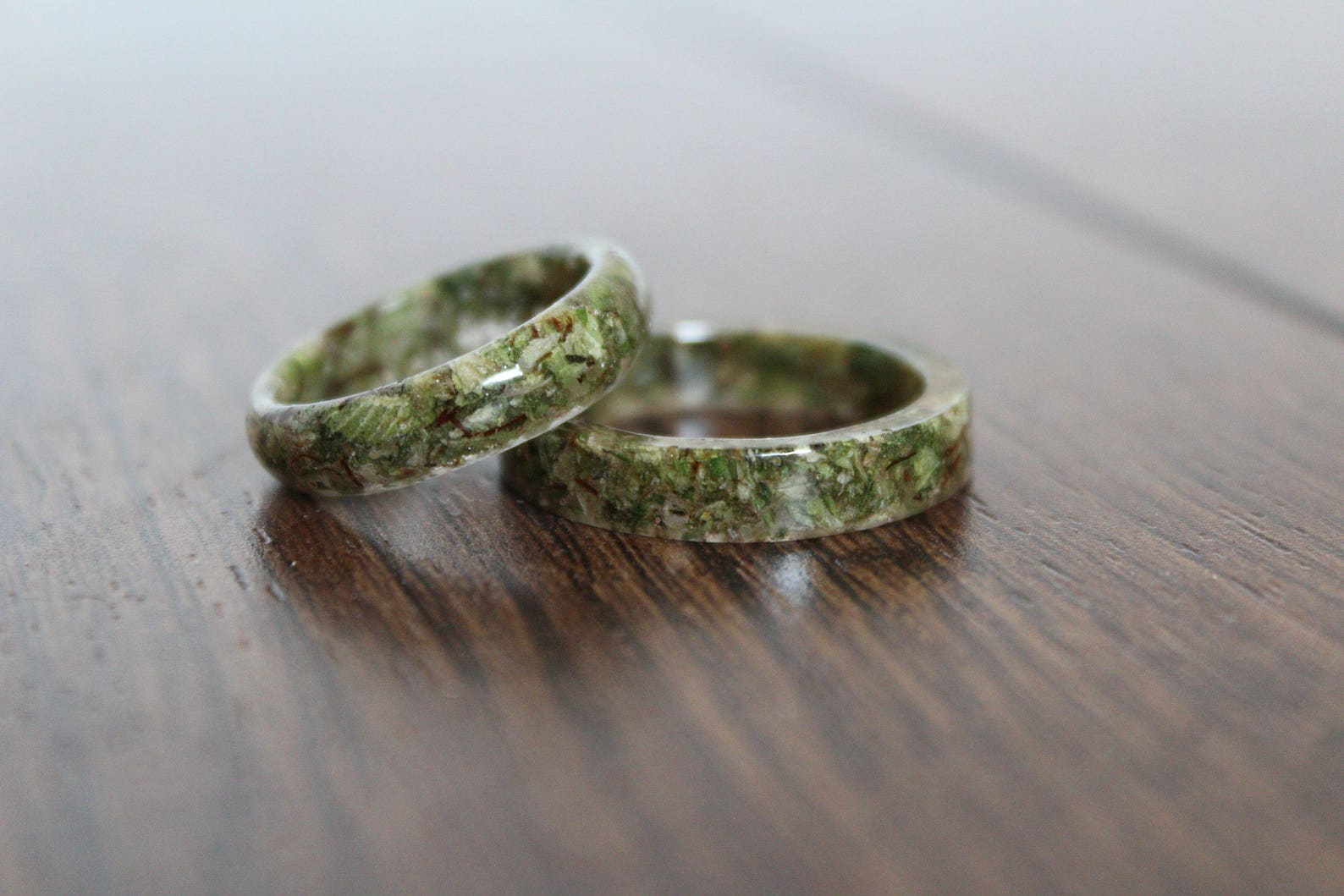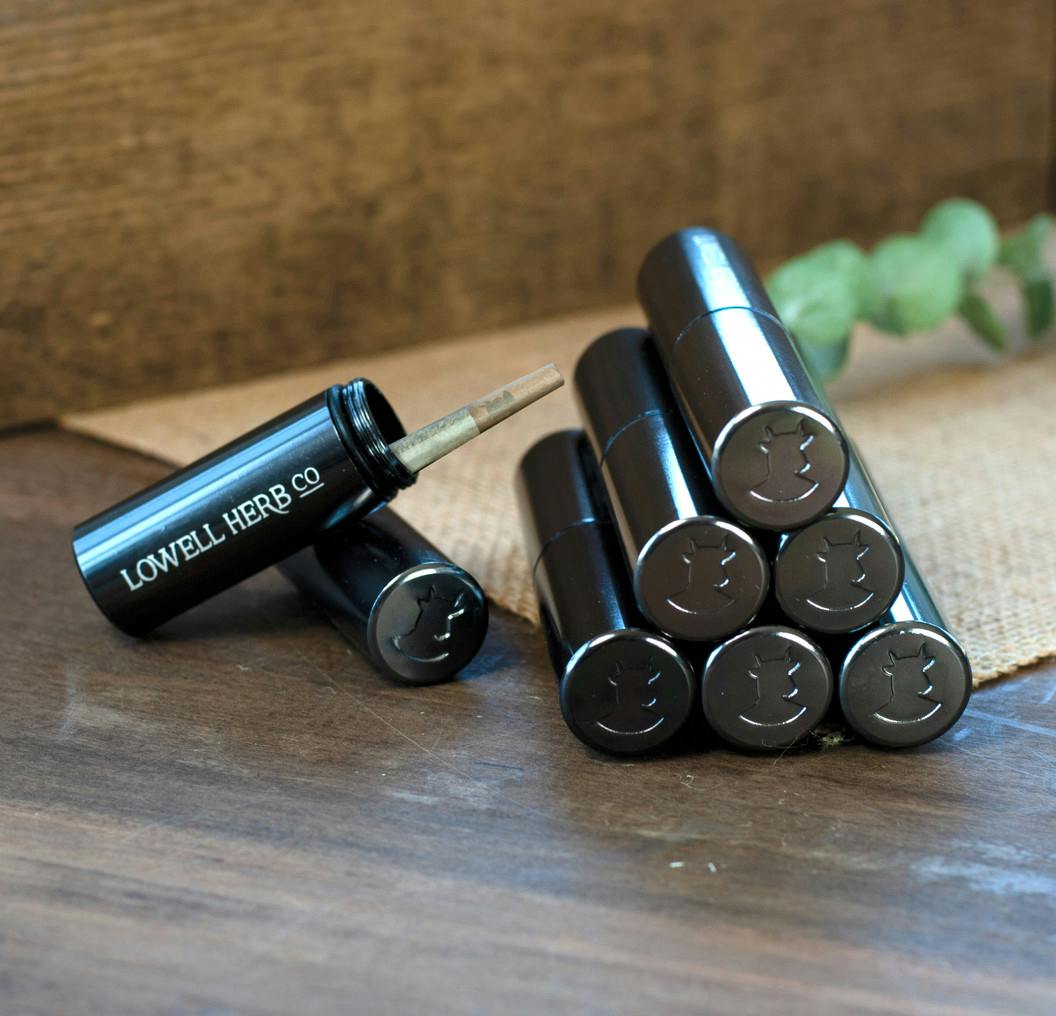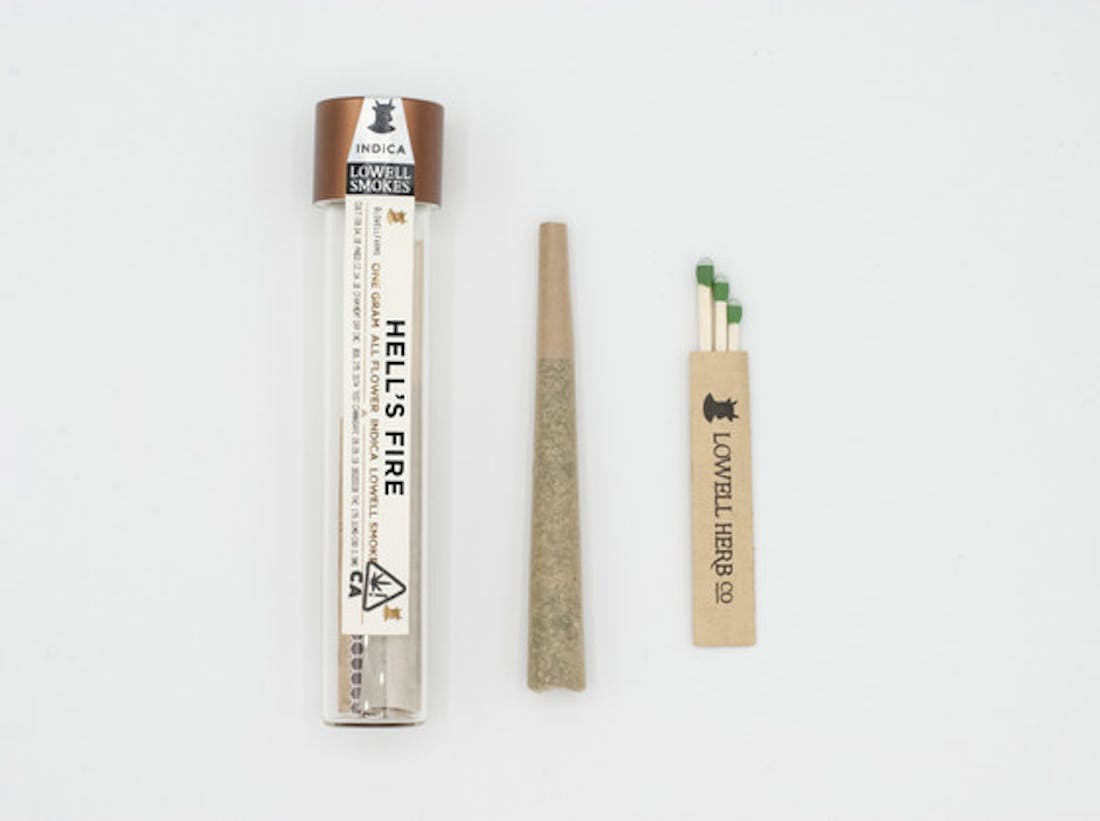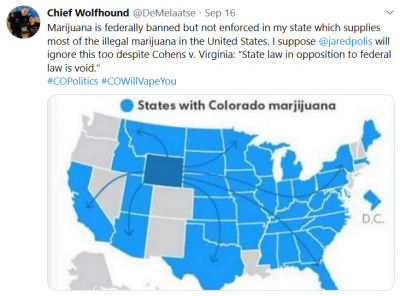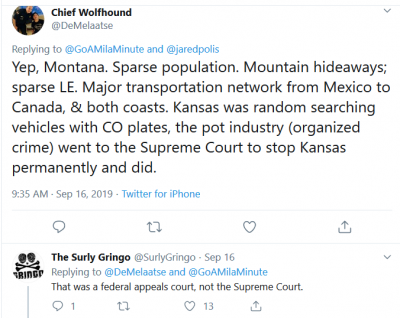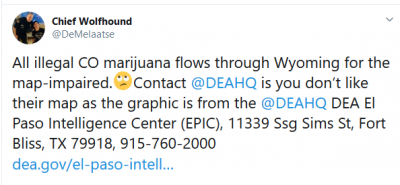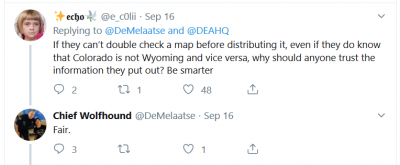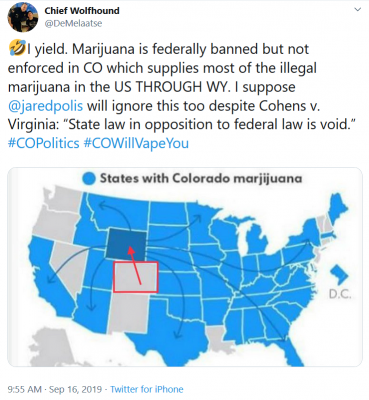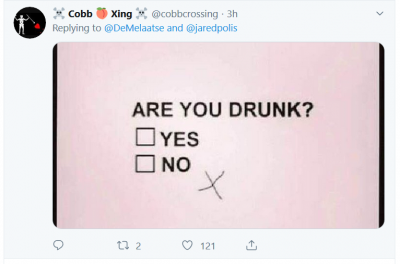How to Apply for the Oklahoma Medical Marijuana Program
Oklahoma voted medical marijuana into law on June 26, 2018, and has since signed granted over 145,000 patient and caregiver licenses. Patients licenses are valid for up to two years, and unlike other states, applicant’s need not have a “qualifying condition” to be approved.
To apply for a patient license in Oklahoma, you will have to provide the following:
- Your full name
- Your place of residence and mailing address
- Your date of birth
- Your contact information, including telephone number and email address
- Your doctor’s information and recommendation
- Your signature, which must be dated within 30 days of the date of application
- A full color digital photo of your head and top of shoulders taken on a white, or off-white background. (The photo must have been taken within the past 6 months.)
Keep in mind that only Oklahoma residents will be approved for a regular state license, although temporary licenses are available for visiting patients from other states. Applicants for a regular state license must prove they’re residents by providing a valid driver’s license, utility bills, or other accepted documents.
There is an application fee of $100. Medicaid (also known as SoonerCare) or Medicare applicants pay a reduced fee of $20. You must use a MasterCard, Visa, or Discover credit or debit card for payments. Prepaid cards from stores are also accepted.
Your transaction may include additional processing fees, which are non-refundable. Unapproved applicants are not subject to a refund.
Additionally, the application must be submitted within 30 days of the doctor’s appointment to be valid.
After the Application is Submitted
The OMMA reviews all submitted applications. If it meets all requirements, the OMMA will issue an approval letter with your license. Then your card will be mailed within 14 days of the date you submitted your application.
Incomplete applications will receive an email which details the reason(s) the submission is incomplete. You can log back into your account to make the needed corrections.
If the Department denies your application, you will receive a denial letter listing why it was rejected within 14 days of the date of submission.
You Can Include a Caregiver if You Need Help
Caregiver licenses are available for those who wish to take care of certain patients who need assistance with their treatment. This documentation can be obtained by filling out the Adult Patient Physician Recommendation Form. An application can be provided when submitting your application, or at a later date. The form can be accessed online using your OMMA account. A patient is allowed one caregiver at any given time.
The caregiver must be 18 or older and must submit proof that they are a resident of Oklahoma. There are no other parameters to qualify.
You can change your caregiver. Patients must submit a Patient Withdrawal of Caregiver Form to withdraw the first person before designating another caregiver. The patient is required to sign and submit a new Adult Patient Caregiver Designation Form for their desired new caregiver.
What Conditions Qualify for Medical Cannabis Treatment in Oklahoma?
Unlike other states, there’s no list of qualifying conditions in Oklahoma – making it a rather unique and unrestricted program.
Oklahoma’s State Question 788, the initiative that legalized medical cannabis, says “There are no qualifying conditions. A medical marijuana license must be recommended according to the accepted standards a reasonable and prudent physician would follow when recommending or approving any medication. No physician may be unduly stigmatized or harassed for signing a medical marijuana license application.”
While there are no qualifying conditions in Oklahoma, you must still be able to show that you will benefit from the use of cannabis. When visiting the doctor, be sure to have documents to demonstrate your medical needs. Documents include:
- Patient records and charts in detail
- Records of any physical therapy
- Current prescriptions being taken
- All hospital visits made by the applicant
- Medical test results
Once approved by their physician, applicants will need to apply through the state’s online system. Applications and payment are collected via omma.ok.gov. To login, applicants must use a valid email address which will be used to receive notices.
Submit Your Application at the OMMA Website
Applications are only being accepted at omma.ok.gov.
The following unexpired, valid documents can be used when submitting proof of residency online:
1) Proof of state residency – Digital, color copies of any of the following can be used:
- Oklahoma driver’s license (front and back is required)
- Oklahoma identification card (front and back is required)
- Voter I.D. license
- Certain utility bills. The calendar month must precede the date of the application. This excludes cellular telephone and internet bills
- A deed to any residential property in Oklahoma
- A current in-state rental agreement for residential property
2) Proof of identity – Digital, color copy of any of the following will suffice:
- Oklahoma driver’s license (front and back)
- Oklahoma state I.D. (front and back)
- U.S. passport or other U.S. government issued I.D.
- Tribal I.D. cards, which must be approved for identification purposes by the Oklahoma Department of Public Safety.
- U.S. Bureau of Indian Affairs identification card
3) A digital photograph of your full face
4) An Adult Patient Physician Recommendation Form that is dated 30 days or sooner than the application’s submission. NuggMD will provide users with the form.
5) SoonerCare (Medicaid) or Medicare I.D. card or enrollment documentation if you’re applying for the discounted registration rate of $20.
The NuggMD Process

When applying with NuggMD, applicants take the following steps:
1) Create a NuggMD account at nuggmd.com.
2) Choose the state in which you wish to apply.
3) Enter your required information, including age, name and address.
4) Fill out your medical history. Provide as much detail as you can to ensure your doctor will have all the information they need to evaluate your condition.
5) Input your payment info while waiting in the NuggMD virtual waiting room.
6) Once available, the physician will begin the medical evaluation using NuggMD’s telemedicine platform. The session can be as long or short as needed. Don’t hesitate to ask questions about your prognosis, how cannabis will fit into your treatment plan or anything else related to your visit.
A few of the more common questions asked during consultations include:
- Should I take CBD as well?
- What’s the best method of ingestion for me?
- Should I use more than one method of ingestion?
- What dosage should I use?
- How often should I consume?
- Will any other medications or herbs I’m using affect my cannabis treatment?
- Are there any health risks I should be concerned about?
Give your doctor a complete understanding of your health. Tell them about every medicine, supplement and vitamin you are taking. Doing so will allow them to warn you of any possible adverse drug interactions to be aware of.
NuggMD patients only pay $99. This is in addition to the cost of the online application.
Those who are approved receive instructions on how to complete the state registration. The instructions will arrive via email.
Don’t worry if you get confused during the process. Our expert customer service team is here to help you through the process.
What Cannabis Consumption Methods Are Available in Oklahoma?

All methods of consumption are available. This includes:
- Smoked or Vaporized Cannabis: The effects typically take moments to minutes and can last two to three hours at a time.
- Concentrates: These oils are versatile in usage. They can be added to smoking flower, used in edibles or even done in a dab. Keep in mind that extracted cannabis oil is much more potent than dried flower. When smoked, the effects should appear in a few minutes.
- Edibles: Often taking a half hour to two hours to kick in, edibles are longer-lasting options. They are incredibly potent, but due to their delayed onset effects, many overconsume. Be sure to start on a low dose and go slow from there.
- Topicals: Cannabis can penetrate the muscle but not into the blood with creams and balms. Taking near immediate effect, topicals are a popular choice among many users with body pains.
What Does Cannabis Feel Like?
If you’ve heard that cannabis will make you giggly, happier and relaxed, then you have a broad understanding of how marijuana feels. Depending on the strain, these effects and others can be more or less prominent in the experience. Other common effects of cannabis include:
- Changed perception of time
- Decreased energy, colloquially called “the couch lock”
- Giggles
- Happiness
- Increased energy
- Loss of concentration
- Relaxation
- Temporary memory loss
There’s also the occasional horror story depending on tolerance and/or dose. If you’ve had a little too much, you may feel somewhat disconnected from reality or experience some paranoia, possibly even hallucinate on a rare occasion. You may find yourself becoming more introspective and less outgoing. This may be coupled with a burst of creative energy.
In truth, both positive and negative effects vary from person to person. Until you know how you’ll react to cannabis, plan pleasant activities. Be around people you are comfortable with when you consume. Consider being in a place that makes you feel happy and comfortable as well.
And do NOT drink alcohol. It’ll most likely create an unpleasant effect of being way too intoxicated, resulting in a headache, room-spinning and even vomiting. Some may know it as being crossfaded.
What to Do if I Consume More Than I Should?
One of the most common and unpleasant side effects of marijuana overconsumption is anxiety. Individual levels vary by person, with stronger tolerances playing a factor. Remember, just because one friend can consume 25mg or more doesn’t mean you need to in order to feel the same effect. If you consume more cannabis than your tolerance allows, you’re very, very likely to become anxious.
Do your best to remain calm if you find yourself in this situation, and don’t be embarrassed. You aren’t alone. Many cannabis patients can tell you exactly what it feels like to have a panic attack after consuming a heavy dose.
Once you’re back to your normal self, call your doctor and have your dosage adjusted. Believe it or not, some people get extremely high from doses as small as 2.5mg THC. Each person metabolizes cannabinoids at varied rates. At the same time, consider having some CBD oil on hand. For some, it can help offset the effects of THC during these rare occasions.
Be sure to use the old cannabis adage “start low and go slow”! We can’t say this enough. You can always consume more, but you can never consume less. So, don’t rush it. Be patient. Listen to your physician’s instructions for ideal results.
Let’s Discuss Cannabis Hyperemesis Syndrome
It’s true that no one has died of an overdose from cannabis. However, you run a chance of developing Cannabis Hyperemesis Syndrome. If you experience symptoms such as severe vomiting, be sure to seek medical attention. Excess vomiting can cause dangerous dehydration and metabolic imbalances, so this really is a medical emergency.
And not to state the obvious, but if you’re under the influence of cannabis, get a ride to seek medical attention. Never attempt to drive yourself.
Cannabis Hyperemesis Syndrome is on the rise as more consumers take more significant doses of THC. The cause of the condition is unknown. It’s believed by some that CHS is the result of the over-stimulation of the body’s CB1 and CB2 receptors brought on by large doses of THC.
Cannabis Hyperemesis Syndrome seems to happen in three stages:
- The Prodromal stage is most mild nausea and pain in the stomach. In some cases, this can lead to a brutal cycle where patients consume more cannabis thinking it will relieve the condition. This is a process that can last for months, even years.
- The Hyperemesis stage is where the patient begins vomiting in larger amounts. They may suffer from dehydration and malnourishment due to an inability to hold anything down. A hot shower is often considered the only temporary source of relief from the nausea. See a doctor right away if this occurs.
- The Recovery stage begins after cannabis use ceases. Relief tends to come in days once the person stops consuming. That said, it can take months to fully recover. If cannabis use is reintroduced, the symptoms run a high probability of returning.
It is not certain why some consumers develop the condition and others do not. Meanwhile, some continue to dispute its validity.
That said, this is the state of cannabis today. It is a biphasic drug that offers varying effects at different dosages, and that threshold varies from person to person. This is why it is vital to consume cannabis cautiously and responsibly.
Scientists can’t yet pinpoint who is likely to develop cannabis hyperemesis, as it can be a months-long process to develop. So, again, be sure to start low and go slow, listen to your body, and contact the doctor as soon as possible if you start to notice nausea or stomach discomfort.
Following the Law in Oklahoma
Oklahoma has the highest prison population per capita. Not just in the U.S., but the world. So, it’s best to remain on the right side of the law.
The state’s medical marijuana laws say that if you don’t have a patient license, but can show that you have a medical condition, then possession of up to 1.5 ounces without a valid card is a misdemeanor offense with fines not exceeding $400. Possession of any more can result in possible jail time. That said, drug paraphernalia remains illegal for non-card holders, who could face jail time. Card holders are exempt from the law.
Counties are allowed to determine how they prioritize non-violent cannabis offenses, which means people can still end up in jail for marijuana. In some cases, DAs have reportedly refused parolees the right to use medical cannabis, even if they have a card. Reports have also claimed that some DAs are instead steering offenders towards opiate-based options.
According to H.B. 1441, those driving under the influence of a Schedule 1 substance will be jailed for anywhere from 10 days to over a year, with their license possibly suspended for up to three years. This prohibition against driving under the influence applies to medical cannabis users as well. So your card won’t save you if you’re driving while high. Oklahoma also allows for property and vehicles to be seized in cannabis cases.
Additionally, while employers can’t discriminate against patients, consumption at work can still be restricted by the employer. The same goes for consumption in public places, just like tobacco and alcohol.
You cannot buy your cannabis anywhere but from an OMMA licensed medical marijuana dispensary, and you can’t sell your cannabis to anyone unless you’re a state-licensed dispensary. You also can’t give away your cannabis, not even for free to another patient, as unfair as that seems. And don’t even consider taking it out of state, whether or not that state allows cannabis use. It’s a federal crime to transport medical marijuana across state lines, and the penalties are very severe.
Need Help? Nugg’s Here for You
Nugg’s eager customer service team answers hundreds of questions each and every day via live chat and email. They think outside the box to help solve your cannabis problems. If there is a solution, they’ll find it to the very best of their abilities.
On the rare chance that Nugg is unable to help, the list below has information and links to Oklahoma legislators, regulators and some of the more active cannabis advocacy organizations. If you know of any other organizations we could add to this list, we’d love to hear from you.
Also, consider using this list to become more active in medical marijuana legislation. We’ve made great strides with legalization, but the battle for freedom of choice still rages on. It’s not time to rest on our laurels at this point. Please consider joining the marijuana community as we endeavor to end the War on Drugs once and for all.
Additional Resources
Medical Marijuana Registry
Oklahoma Medical Marijuana Authority
PO Box 262266
Oklahoma City, OK 73125-2600
Legislators
Activist Organizations
- Oklahomans for Health
- Oklahoma Cannabis Association
- Green the Vote
- Oklahomans for Cannabis
- New Health Solutions Oklahoma
- Americans for Safe Access
- American Trade Association for Cannabis and Hemp
- Law Enforcement Against Prohibition
- Marijuana Policy Project
- NORML
- Project CBD
Frequently Asked Questions About Medical Cannabis in Oklahoma
Where can I read the law for myself?
Visit here for the full text: http://omma.ok.gov/Websites/ddeer/images/SQ%20788.pdf
How long does my patient’s license last?
Your license can last for up to two years before it needs to be renewed, unless your doctor establishes a shorter timeline for use.
Can I use my medical marijuana card from another state?
Out of state patients can obtain a temporary license for up to a month. The out of state license will cost $100, regardless of participation in public health programs or financial need. Do not make the mistake of using cannabis in Oklahoma without this license. The penalties for unlicensed possession can include jail time. It may seem unreasonable to pay the state $100 for the right to legally use cannabis for a short trip, but this expense is nothing compared to legal costs of defending yourself against illegal possession charges. To apply for your temporary card, go to the state’s website here and follow the instructions: http://omma.ok.gov/temporary-adult-patient-application-information1
How do I find a medical cannabis doctor?
You can find a list of approved physicians on this list provided by the OMMA, or simply head over to NuggMD to complete the entire process online: http://omma.ok.gov/Websites/ddeer/images/MM%20Registered%20Physicians.pdf
Is home growing allowed?
Yes, all licensed patients are able to cultivate at home. For specifics on amounts, check the question below.
How much cannabis am I allowed to possess for medical purposes?
Under Oklahoma laws, qualified patients or caregivers can legally possess up to three (3) ounces of medical cannabis. Approved patients are allowed to own six (6) mature plants as well as one (1) ounce of cannabis concentrates. They can also possess up to 72 ounces of edibles in addition to having up to eight (8) ounces of cannabis at their house.
What are the requirements for a minor to obtain a license?
Minors can obtain their medical marijuana license to possess, use and grow cannabis in Oklahoma. The minor must have signed recommendations from two different physicians as well as the signature of their parent or guardian. To learn more, visit http://omma.ok.gov/minor-patient-application-information1.
Will my information be kept private?
Both your patient records and all inventory tracking records containing your patient information must comply with federal and state laws, including HIPAA, and inventory tracking records can’t be retained for more than 60 days. You can read the full text of protections provided under HB 2612 here in Sec. 7.
Will every dispensary sell the same products?
No, unlike other stores, dispensary supplies will vary. If you’re looking for a specific product, consider calling ahead to make sure the dispensary has the product you need.
What documents do I need to fill out my Oklahoma medical marijuana card application?
To apply for a medical marijuana card, you’ll need:
1) Proof that you’re an Oklahoma resident, which can be one of the following:
- Oklahoma driver’s license or ID
- Oklahoma voter ID card
- A utility bill from the month just before your application (cell phone and internet bills excluded)
- A deed to residential property that you own in Oklahoma
- A current residential rental agreement in Oklahoma (your name must be on the agreement)
2) Proof of your identity, which can be one of the following:
- Oklahoma driver’s license or ID
- Oklahoma identification card (front and back)
- U.S. passport or other photo ID that’s been issued by the U.S. government
- Tribal ID that’s approved by Oklahoma for identification purposes, including US Bureau of Indian Affairs ID or Oklahoma tribal photo IDs.
3) A clear digital, full color picture of your full face on a white or off-white background
4) Your Patient Physician Recommendation form that has been signed within 30 days of your application submission
5) Proof of SoonerCare or MediCare enrollment or 100% disabled veteran status if you’re applying for the discounted application fee of $20.
How long does it take to receive a state medical card?
It can take up to 14 days for your application to be approved after completing your online application. You should check your email frequently during this time as the OMMA may need additional documentation to complete the process. If you do not provide any missing information within the time limit, your application would be denied and you’d have to begin the process again. There is no refund for the application fee.
How much does a state card cost?
The application fee is $100. SoonerCare and MediCare patients and 100% disabled vets can apply for a discounted fee of only $20.
Is there a discount for purchasing medical marijuana in Oklahoma?
Unfortunately, no. Most states that offer recreational cannabis do have a tax discount, or no taxes, for medical marijuana purchases. Oklahoma is a medical marijuana only state though, and the state taxes all sales at the rate of 7%
Am I required to register with the state to become a medical marijuana patient?
Yes. You must first register with, and receive approval and a license from the Oklahoma Medical Marijuana Authority before using cannabis for medical purposes: “Patient”or”Qualified patient”means a person that has been properly issued a medical marijuana license pursuant to Title 63 O.S. § 420 et seq. and these rules. (Emergency Rules page 4)
Can employers still fire me for testing positive for cannabis on drug tests?
According to HB2612 page 23, your employer can’t fire you solely for your status as a medical marijuana patient unless:
- they are required to by federal law in order to obtain federal funding,
- the employee doesn’t have a valid medical marijuana license,
- they consume medical marijuana while at work, or
- the position involves a “safety sensitive” job.
The OMMA defines a safety sensitive job as “any job that includes tasks or duties that the employer reasonably believes could affect the safety and health of the employee performing the task or others including, but not limited to, any of the following:”
- the handling, packaging, processing, storage, disposal or transport of hazardous materials,
- the operation of a motor vehicle, other vehicle, equipment, machinery or power tools,
- repairing, maintaining or monitoring the performance or operation of any equipment, machinery or manufacturing process, the malfunction or disruption of which could result in injury or property damage,
- performing firefighting duties,
- the operation, maintenance or oversight of critical services and infrastructure including, but not limited to, electric, gas, and water utilities, power generation or distribution,
- the extraction, compression, processing, manufacturing, handling, packaging, storage, disposal, treatment or transport of potentially volatile, flammable, combustible materials, elements, chemicals or any other highly regulated component,
- dispensing pharmaceuticals,
- carrying a firearm, or
- direct patient care or direct child care
(H.B. 2612 page 24, section K)
Does the state provide electronic cards immediately with applications?
Unfortunately no. Your state application can be submitted online, but the state then has up to 14 days to review your application. If your application is missing any pertinent information, the state will email you requesting the corrections, which you can also submit online. Those who fail to complete all requirements of their application will receive a rejection letter after 14 days explaining why their application was denied.
Can I use medical marijuana in public?
Not only can you not smoke cannabis in public, but you can’t vaporize it either. All smoking and vaporizing is subject to the same restrictions as cigarette smoking.
(OMMA Regulations Sec. 310:681-2-11)
Can I use cannabis while on parole?
Oklahoma’s state law doesn’t prevent medical marijuana patients from using cannabis while on parole, but the district attorney in your county may still prevent it. The only way to know if you’re safe to use cannabis while on parole is to ask your parole officer what your county’s rules are.
Does Oklahoma law provide parental protections to MMJ patients?
The state recently passed SB 811, which will be in effect on Sep. 20, 2018. Sec. 425 says:
- No medical marijuana license holder may be denied custody of or visitation or parenting time with a minor, and there is no presumption of neglect or child endangerment for conduct allowed under this law, unless the person’s behavior creates an unreasonable danger to the safety of the minor.
What is the Oklahoma Medical Marijuana and Patient Protection Act?
HB 2612, which is named The Oklahoma Medical Marijuana and Patient Protection Act is also colloquially known as the Unity Bill, and it both clarifies some ambiguous areas of SQ 788 (the MMJ legalization bill) and makes changes that were necessary to conform with other laws. For instance, employers are still prevented from firing or refusing to hire medical marijuana patients, but there’s an exception now for so called ‘safety sensitive jobs.’ The bill can be read in full here: https://legiscan.com/OK/text/HB2612/id/1956047
How to Get a Medical Marijuana Card in Missouri (2020 Guide)
Leave a CommentIf you told Missouri residents two decades ago that medical cannabis would become legal in the state, 99% of the people would have laughed at the notion. The other 1% were hard at work to make the dream a reality.
The program is off to a bit of a dodgy start, with the state already granting medical marijuana cards but no market to supply them; but it IS starting. There are already 22,000 medical marijuana patients in MO and applications are rapidly picking up pace.
The state isn’t expected to have a legal supply of cannabis for sale at dispensaries until March 2020 at the earliest, but there are still advantages to having a card before the first dispensary opens. One advantage is that you can grow your own cannabis at home if you get the additional cultivation certificate from the state. You’ll also be among the first to be able to buy legal cannabis at dispensaries once they open.
Read below to find out everything you need to know to navigate the new Missouri medical marijuana landscape. Whether you’re just beginning to use cannabis or have been using it for years, we want to make sure you have accurate and reliable information so you can find the relief you need and the happiness you deserve.




